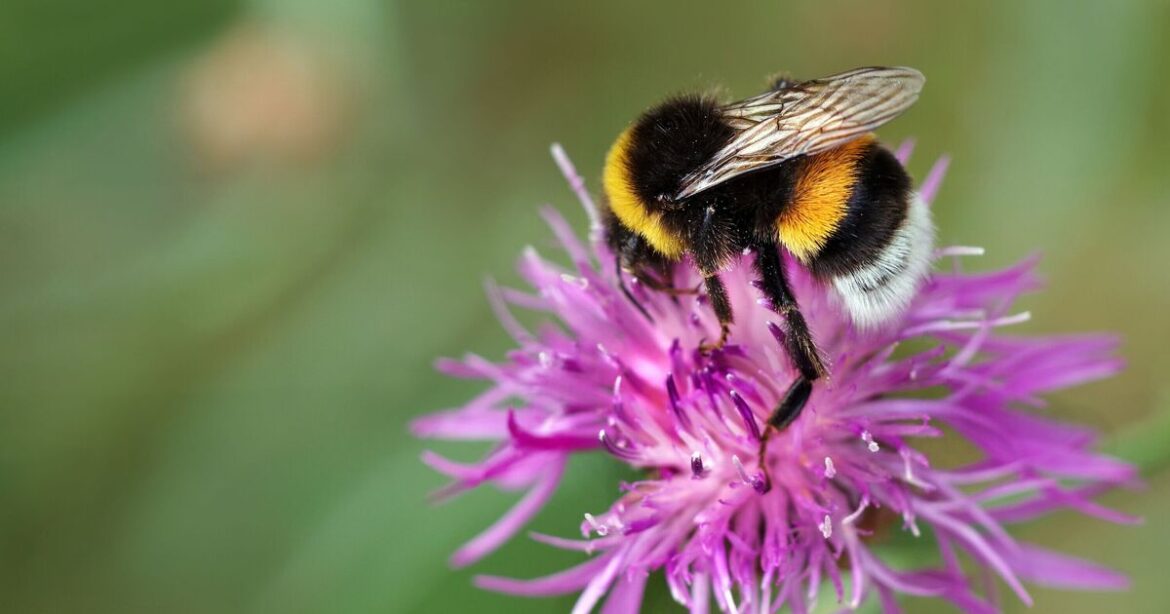Attract bees to your garden and keep them happy with flowers they love.
Most of us are aware of just how vital bees are to our daily lives. As pollinators, they are crucial in helping plants reproduce, which is especially important for plants that we eat, including fruits and vegetables.
Bees pollinate a significant portion of the world’s crops, and without them, many of these crops would not be able to reproduce, meaning they wouldn’t produce the fruit that we eat.
In the UK, 35 bee species are threatened with extinction. One of the most common threats is the intensification of farming and the increased use of pesticides, which have a devastating impact on wild bees.
Today (May 20th) is World Bee Day, and gardeners who want to do their part to help the bees are being urged to plant two flowers this week. Planting flowers they’re attracted to will help give them nectar throughout the summer, and two of their favourite plants are perfect for planting at this time of year.
Foxgloves
In a video shared on TikTok by Which?, it was claimed that foxgloves are one of the best plants to grow if you want to attract bees. These flowers can be grown from seed in May for flowers in the summer, meaning you’ll want to plant them as soon as possible.
The clip explained: “Just scatter the tiny seeds in pre-watered compost around May, then transfer outside to a sunny, moist spot when the roots fill the tray.
“The plant may only last a couple of years, but they will self-seed, meaning new, nectar-filled flowers should pop up every summer.”
Gardeners should be careful when planting foxgloves, however, as the plant is toxic to both humans and pets. The RHS states you should use gloves and other protective equipment when handling, and you should never attempt to eat the flowers.
Lavender
If you’d rather steer clear of the potentially harmful nature of foxgloves, lavender can also attract bees to your garden and is the “perfect plant for beginners” who just want to do their bit to help the bees.
The gardening expert on TikTok said: “Come April or May, it’s happy to be in poor-quality soil, so long as it’s sunny and drains well. Its lovely scent isn’t just for people. Bees flock to it.”
How to help bees thrive
Bees love foxgloves and lavender, but they’re also attracted to many single-flowered, nectar-rich plants, including buddleia and French marigolds. While double-flowered plants like carnations and petunias may look stunning, they aren’t as important for bees because they often lack nectar and are harder for bees to access pollen.
James Ewan, a gardening expert at Green Feathers, explained: “Incorporating nectar-rich plants into our gardens creates a sanctuary for our bees, providing that vital food source they need to thrive.
“You can consider adding to this bee sanctuary, by offering both food and shelter; incorporating native wildflowers and shrubs, such as clover. You can even create a nesting site for solitary bees with a ‘bee hotel’ for bees – using bamboo canes or drilled logs in a sunny spot. They’ll love you for it, and you’re mimicking their natural nesting sites for them to lay their eggs and raise their young.”
By adding nectar-rich plants and a safe structure for your bees, you can transform your garden into a haven for bees and fellow pollinators. However, you should steer clear of using pesticides on your plants – as this could have devastating effects.
James added: “Gardeners should avoid using pesticides that contain neonicotinoids or other harmful chemicals, and instead, opt for organic or eco-friendly pest control methods that can help protect bees and other beneficial insects.”

